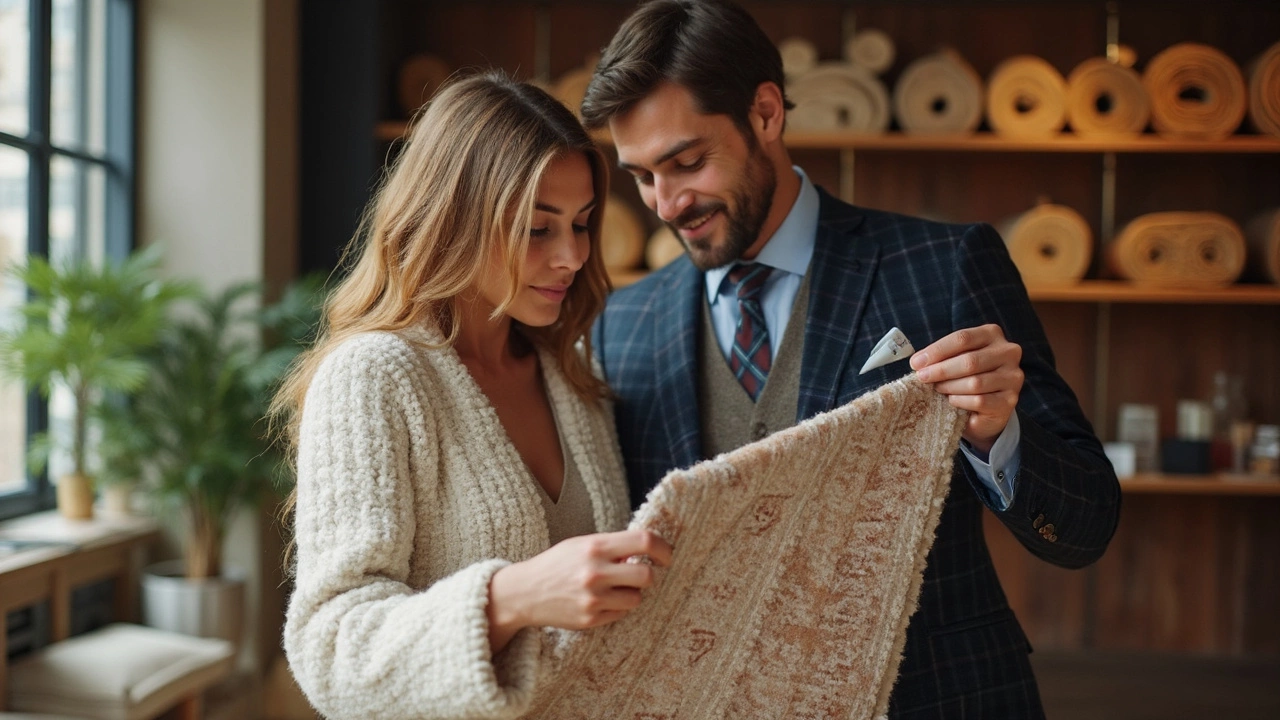Rug Valuation: Simple Steps to Find Out What Your Rug Is Worth
If you’ve just inherited a rug, spotted a deal in a market, or are thinking of selling, you probably wonder how much it’s really worth. The good news? You don’t need a PhD in antiques to get a solid estimate. By looking at a few key factors – size, material, age, condition, and current market demand – you can arrive at a realistic price range.
1. Measure the Size and Calculate Square Footage
Start with the basics: length and width. Most sellers price rugs per square foot, so grab a tape measure and note the dimensions. Multiply the two numbers to get total square footage, then compare that figure to typical price‑per‑square‑foot rates for similar styles. For example, a hand‑knotted wool rug might go for £10‑£15 per square foot, while a synthetic runner could be £3‑£5.
2. Identify the Material and Construction
The fibre type makes a huge difference. Wool, silk, and natural fibers usually fetch higher prices than polyester or nylon. Hand‑knotted or hand‑tufted pieces also command a premium over machine‑made ones. If you can spot a label or feel the texture, you’ll have a better idea of the rug’s baseline value.
Don’t forget the backing. A solid, non‑slip backing can add value, especially for rugs meant for high‑traffic areas. Conversely, a flimsy backing may lower the price unless the rug’s design outweighs that drawback.
3. Check the Age and Origin
Older, vintage rugs often carry a story that collectors love. An 80‑year‑old Persian rug, for instance, can be worth several times more than a brand‑new replica. Look for clues like faded colors, patina, or a maker’s mark. If you can trace the rug to a specific region or tribe, you’ll have a stronger selling point.
If you’re not sure about age, try a quick internet search with any visible patterns or motifs. Many forums let you upload a photo and get feedback from experienced collectors.
4. Assess Condition Honestly
Condition is the make‑or‑break factor. Minor wear, like frayed edges or a few missing threads, might only shave a few percent off the price. Serious damage – large stains, holes, or major repairs – can cut the value in half.
Take clear photos of the front, back, and any problem spots. When you list the rug online, being upfront about flaws builds trust and prevents disputes later on.
5. Look at Current Market Trends
Check recent sales on sites like eBay, Etsy, or specialist rug dealers. Filter for similar size, material, and age. If you see a lot of listings but few sales, demand may be low. Strong sales activity means you can price a bit higher.
Seasonal factors matter too. Spring and summer often see higher demand for light‑colored rugs, while darker, cozy styles can spike in the colder months.
6. Get a Professional Appraisal When Needed
If the rug looks particularly valuable or you plan to insure it, invest in a professional appraisal. An expert will examine weave density, knot count, and provenance, then provide a documented value for insurance or resale.
Appraisals usually cost a small percentage of the rug’s estimated worth, but they can save you from under‑pricing a treasure.
Putting these steps together gives you a clear picture of your rug’s market value. Measure, identify material, note age, be honest about condition, and check what similar rugs are selling for. With that info, you can set a fair price, negotiate confidently, or decide if it’s worth keeping as a family heirloom.
Remember, the right price isn’t just a number – it’s the story behind the rug, the care you put into evaluating it, and the confidence you have when you put it on the market.
-

How to Spot an Expensive Rug: Quick Tells for Every Shopper
Ever walked into a store and wondered if that stunning rug is actually worth its price tag? This article breaks down the clearest signs that a rug is genuinely high-end. You'll learn what materials, weaving techniques, and design details set luxury rugs apart from the mass-produced kinds. We'll also touch on expert tricks like checking the back of the rug and feeling the fibers. Get ready to spot a true investment piece, even if you’re totally new to rug shopping.
